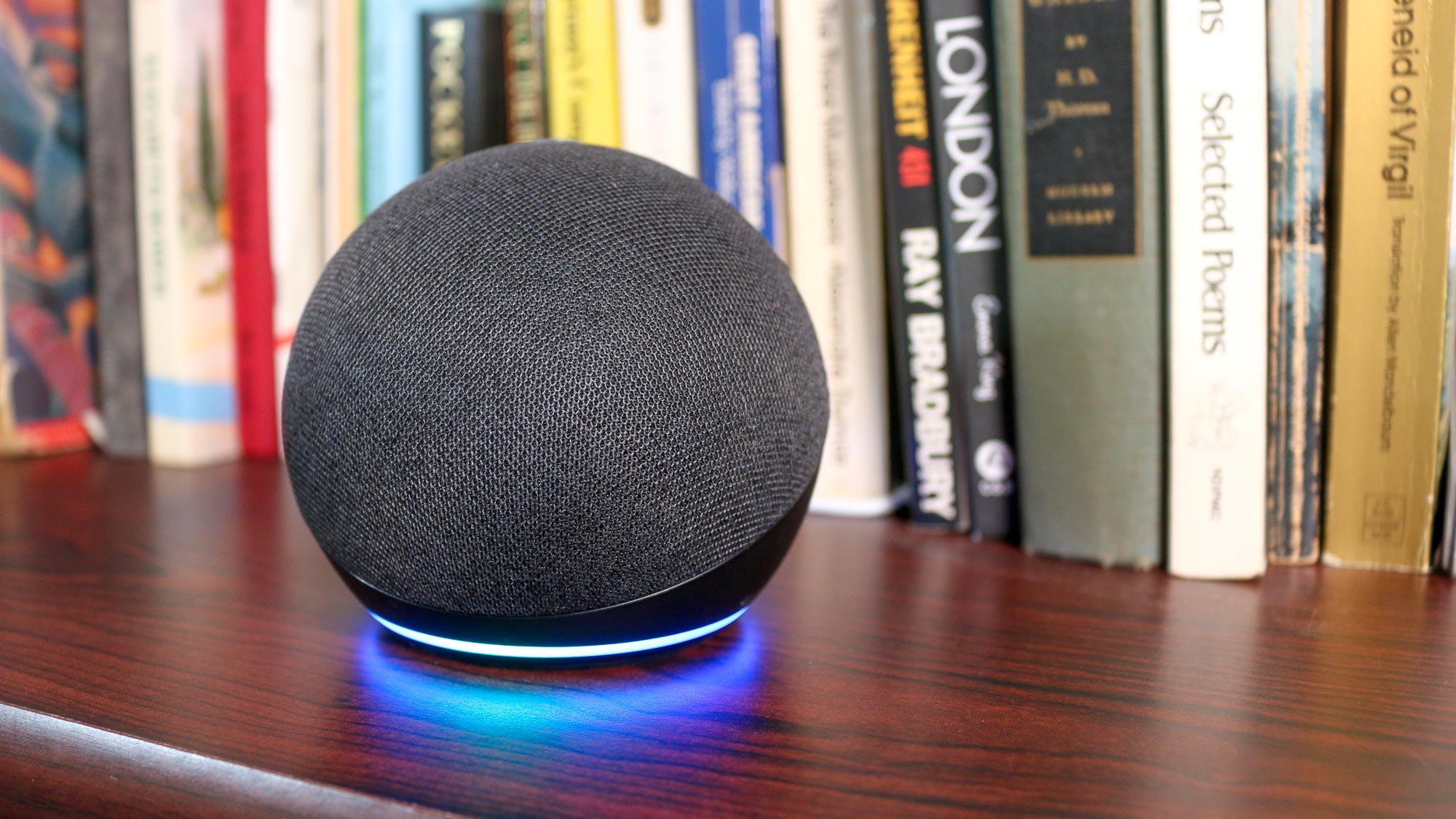Tom's Guide Verdict
The Amazon Echo Dot was the best smart speaker for less than $50, though it's since been replaced. Plus, the $60 Echo Dot with Clock is still the better value.
Pros
- +
Good audio for the size
- +
Lots of Alexa smart home skills
- +
Inexpensive
Cons
- -
Large power brick
Why you can trust Tom's Guide
Speakers: One 1.6-inch
Ports: 3.5mm line out
Wi-Fi: 802.11 b/g/n/ac, 2.4/5GHz
Size: 3.9 x 3.9 x 3.5 inches
Weight: 12 ounces
Everyone’s favorite little Alexa speaker returned with an all-new design in 2020. Though it's since been replaced by the Amazon Echo Dot (5th Gen), the fourth-generation Amazon Echo Dot is the one that benched the hockey puck shape for a new orb-like shape.
Aside from the shape, there wasn't too much different from the 3rd-generation Echo Dot. The new Echo Dot sounded a bit better, but it’s the value of Alexa and all that it can do which made the Amazon Echo Dot one of the best smart speakers for less than $50.
If you want the best Alexa speaker now, you could go for the 5th-gen version of this speaker. But the better value, as we see it, is the Amazon Echo Dot with Clock (5th Gen). The Dot with Clock features a multi-functional LED display on its side, making it a great device for the bedroom or desk.
Otherwise, if you have the space and money to spend, our Amazon Echo (4th gen) review explains why it's the top choice under $100.
Amazon Echo Dot review: Price and availability
The 4th generation Amazon Echo Dot went on sale mid-October 2020 for $49. It was available in three colors: Charcoal, Glacier White, and Twilight Blue.
For $10 more you could get the 4th-generation Echo Dot with Clock, which looks the same as the Echo Dot, but has a LED panel that shows the time, weather, and can be used as a timer. Also on sale for $59 is the Echo Dot Kids Edition, which comes in either a fun panda or tiger motif, and comes with a one-year subscription to Amazon Kids+ (FreeTime Unlimited) and a two-year warranty.
Amazon Echo Dot review: Design
When Amazon introduced the spherical Echo and Echo Dot, I thought it was a pretty cool look. And I wonder how much Apple was going berserk, given that the launch of its own orb-like HomePod mini was less than a month away.
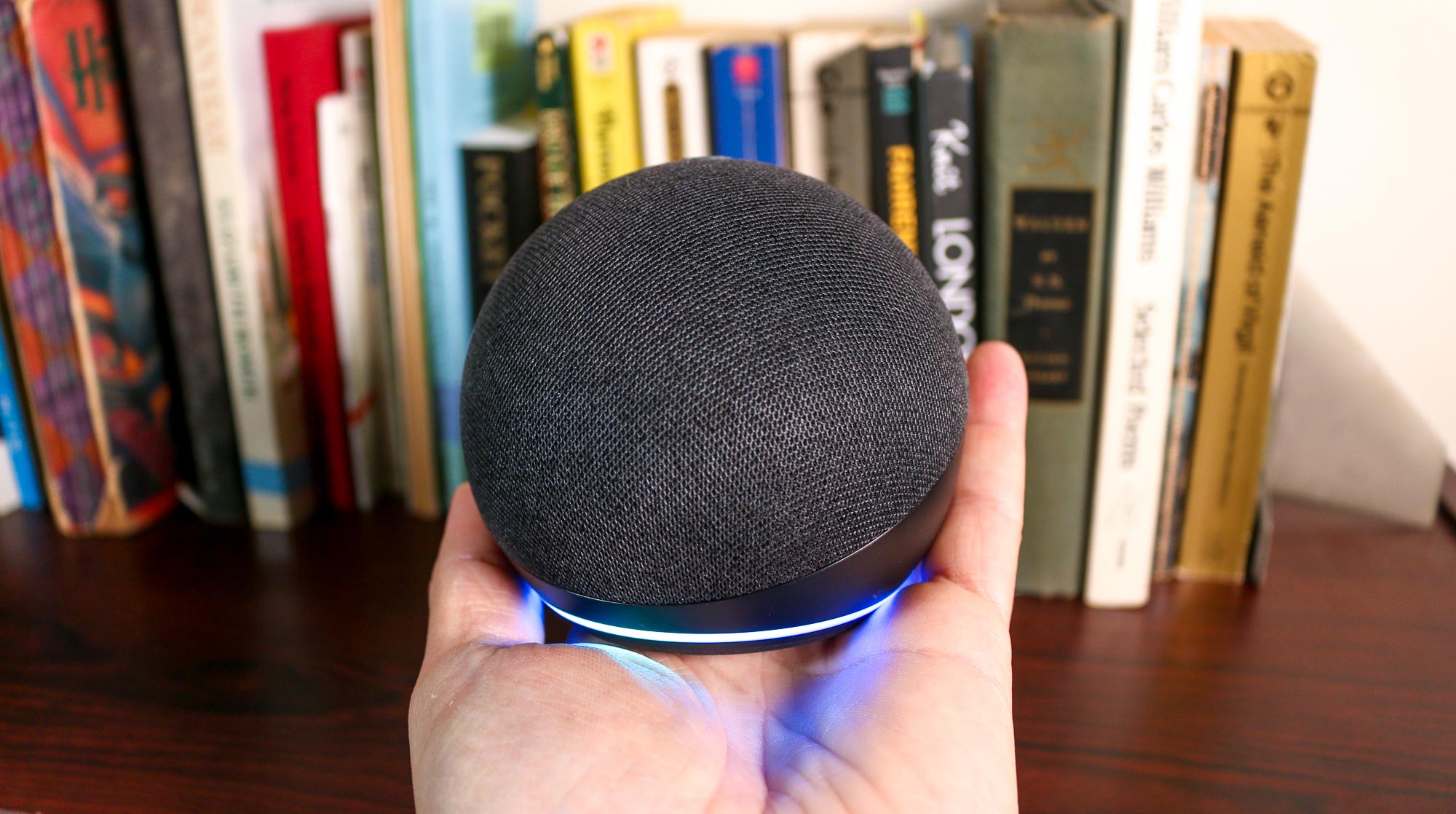
Now that I have the Echo Dot in hand, I’m not as enamored with it. During its launch event, Amazon said that part of the reason for the redesign of the Echo Dot and the Echo were a result of owners placing their smart speakers in more prominent places. While I think that’s a logical reason to change the look of the Echo and the Echo Dot with Clock, I’m not sure if it makes as much sense with the regular Echo Dot. For me, though, the Echo Dot represents a device that’s meant to blend into the background until it’s needed, and the puck shape of older models was better suited to that.
The other major difference between the 4th-generation Echo Dot and previous models is that the ring of LEDs is now on the bottom, rather than the top edge. So now, when you summon Alexa, the glow from the LEDs reflects off the surface of whatever the Dot is resting on, which is cool. It’s like ground effects for your smart speaker. Like other Alexa speakers, the LEDs will change color based on the status of the speaker or your Alexa account. For more information, check out our story Why is Alexa flashing?
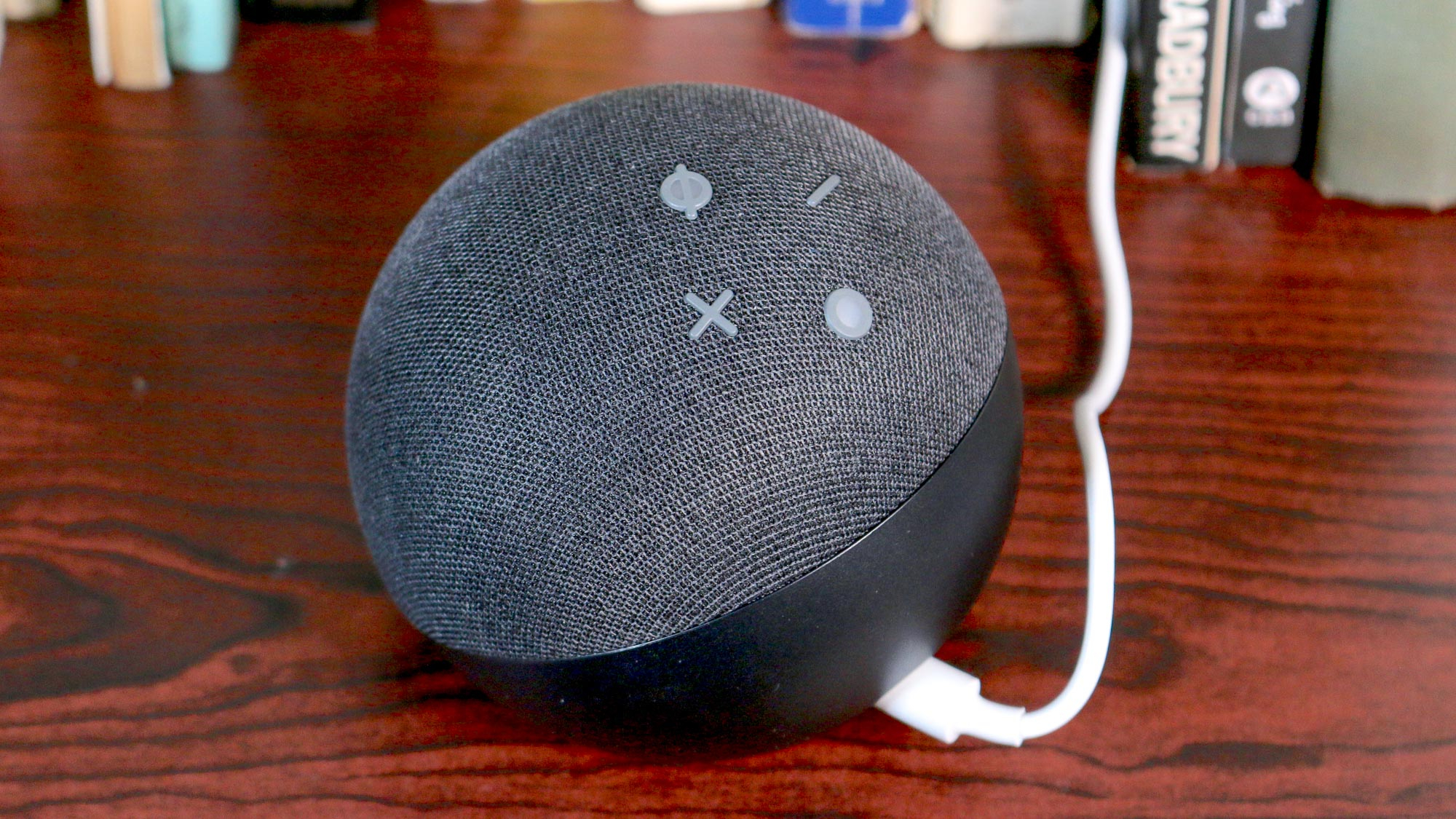
Unlike the HomePod Mini, whose fabric covering swathes the majority of the speaker, the lower third of the Echo Dot is solid plastic; it’s barely noticeable when looking at the Dot head-on, but this plastic section swoops up to the rear. Around the back is a 3.5mm audio-out as well as a proprietary power jack. The Echo Dot’s 15-Watt power wart is pretty sizeable — 2.7 x 1.6 x 1.5 inches — which makes it much harder to use on a power strip with other devices. Even the Echo Spot, which had to power a display, had a much smaller brick.
Arrayed on the top but towards the back are buttons for changing the volume, turning off the microphones, and summoning Alexa. They’re just out of the way to not be visible, but it’s not as elegant as the hidden touch buttons on the Google Nest Mini.
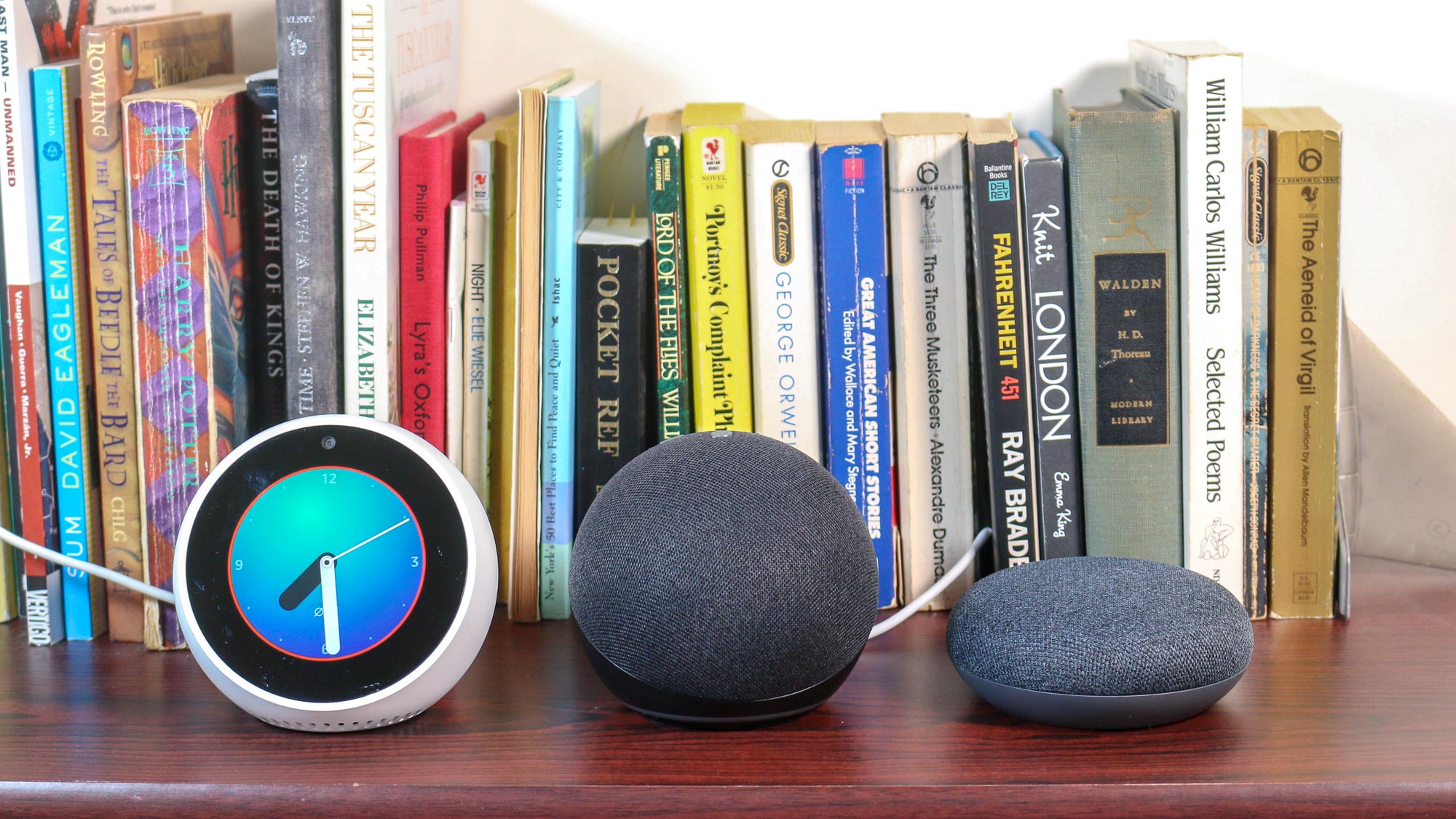
At 3.9 x 3.9 x 3.5 inches, the Echo Dot has a similar footprint to the older Echo Dots as well as the Google Nest Mini and the Apple HomePod mini; overall, it’s a teeny bit smaller than the now-defunct Echo Spot.
Amazon Echo Dot review: Audio performance
The 1.6-inch speaker in the 4th-generation Echo Dot is the same size as that in the third-generation Echo Dot, but the larger chamber of the newer Dot gives a little more resonance to the bass, and now that it faces forward, you should hear a slight improvement. I didn’t have a third-generation Echo Dot on hand to compare, but my colleague Kate Kozuch, who wrote our Echo Dot with Clock review, said the puck-shaped Dot sounded hollower.
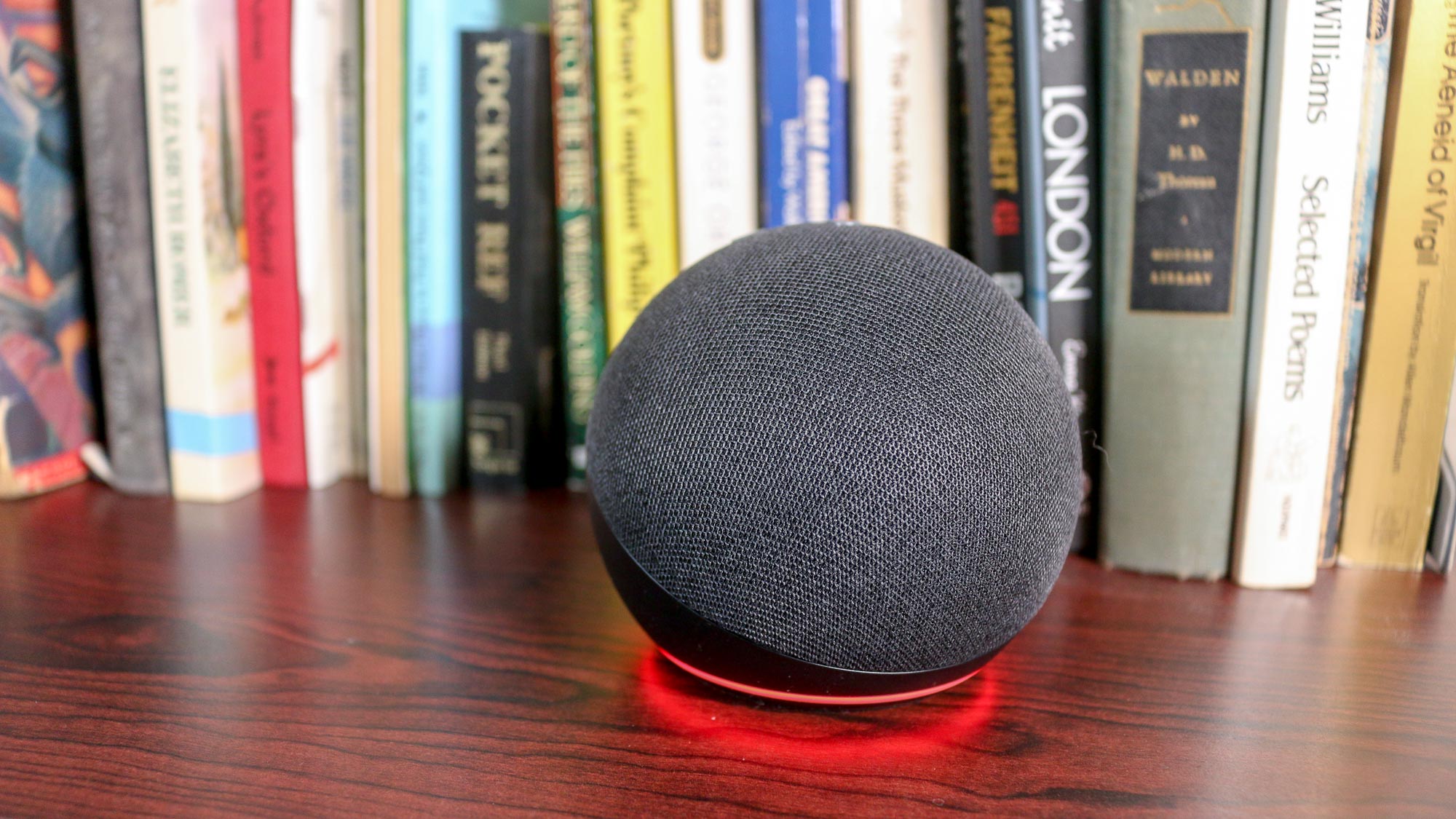
In no time at all, my toddler was shouting “Lexa, JoJo Siwa Boomerang!” and to my chagrin, the Echo Dot responded by playing the teen pop star’s songs in all their bubbly glory. My daughter bopped around the room as Siwa’s effervescent voice rose above the thumpy bass line.
After my daughter went to bed, I spent the evening listening to other genres of music, and found the Echo Dot performed well for its size. Like previous generations, it's ideal as a personal-listening device. It will fill up a bedroom nicely with sound, so long as you don't try and drive it too loud.
Amazon Echo Dot review: Alexa capabilities
Of course, a smart speaker is for more than just playing music, and right now, it’s a two-way race between Amazon and Google to see who has the smarter digital assistant.
When it comes to smart home skills, though, Alexa has a clear lead over Google Assistant in a few key areas.
The first is with smart home routines. Though Google recently added the ability to create routines based on your (or your family member’s) location, it’s only available for use with smart lights and Google’s Nest Thermostats and home security cameras. Alexa’s Routines, by contrast, offer not only geolocation as a trigger, but also inputs from other smart home devices, which gets you much closer to an automated smart home.
Another neat feature with Alexa is Alexa Guard, which will use the microphones in the Echo Dot or any Alexa speaker to listen for such things as a smoke alarm or glass breaking, and will send you an alert if it hears anything. Alexa Guard can also be linked to a number of the best DIY home security systems, too. Alexa Guard can also be programmed to turn any connected smart lights on and off to make it look like someone’s home while you’re away.
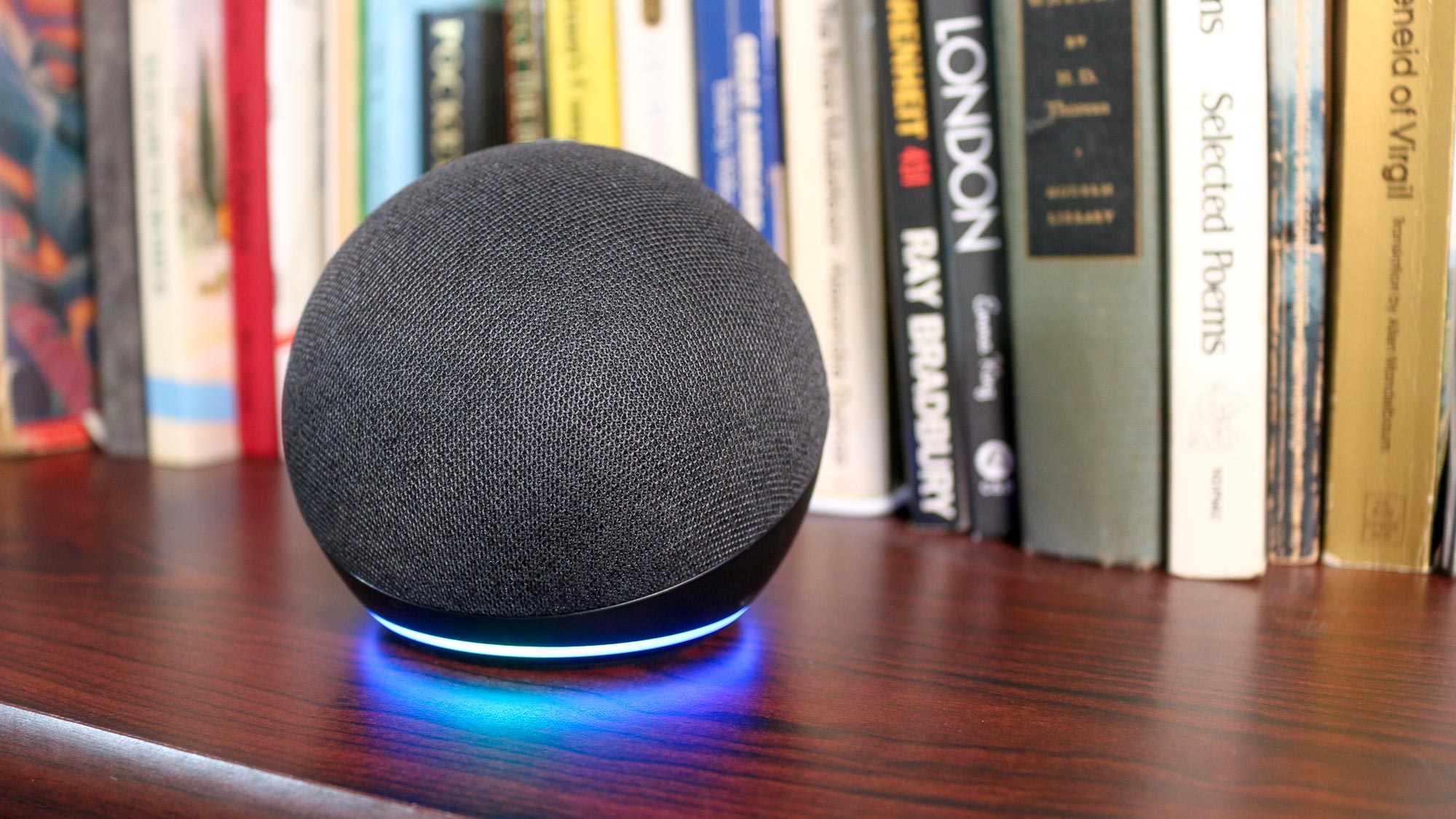
Amazon has also partnered with a number of companies so that you can pair smart home devices such as lights and sensors directly with Echos, and use them as smart home hubs. The Echo Dot has Bluetooth, so only those gadgets with Bluetooth can link directly to it; the pricier $99 Echo has Zigbee as well, which lets you connect a wider range of products.
A new low-power mode will reduce the Echo Dot’s power consumption while it’s idle, though there are a few caveats. The Dot won’t enter low-power mode if you linked a Spotify account to your Alexa account, if Alexa Guard is in Away mode, if there’s an active notification, if you have an external speaker plugged into the Dot, or if a smart home device is connected directly to the Dot via Bluetooth.
This Echo Dot can also use the new motion sensing feature, which uses ultrasound to detect when people enter or exit a room. A bit like the Echo Show already does, but without the camera.
The idea is that you can setup Alexa routines that activate or deactivate depending on where you are. A bit like you can do with third party motion sensors, but without the middle man.
Simply head into the Alexa app, find your device's settings, and select the Motion Sensing option. That'll let you toggle the feature on or off, and set up routines.
Amazon Echo Dot review: Verdict
With the 4th generation Echo Dot, Amazon has once again delivered an inexpensive smart speaker that doesn’t skimp on features or quality. However, while I think the new spherical shape is interesting, it doesn’t serve much purpose. Unlike the larger Echo, which is designed to be more of a central entertainment device, the Echo Dot’s purpose is more of a personal smart speaker; to that end, I prefer the older hockey puck shape. (And, it’s now available for just $30).
But, I like the sphere for the Echo Dot with Clock, as it raises the display a bit and makes it easier to read. For my money, I’d opt for the Amazon Echo Dot with Clock; it’s just $10 more, but the addition of a clock makes it infinitely more useful.

Michael A. Prospero is the U.S. Editor-in-Chief for Tom’s Guide. He oversees all evergreen content and oversees the Homes, Smart Home, and Fitness/Wearables categories for the site. In his spare time, he also tests out the latest drones, electric scooters, and smart home gadgets, such as video doorbells. Before his tenure at Tom's Guide, he was the Reviews Editor for Laptop Magazine, a reporter at Fast Company, the Times of Trenton, and, many eons back, an intern at George magazine. He received his undergraduate degree from Boston College, where he worked on the campus newspaper The Heights, and then attended the Columbia University school of Journalism. When he’s not testing out the latest running watch, electric scooter, or skiing or training for a marathon, he’s probably using the latest sous vide machine, smoker, or pizza oven, to the delight — or chagrin — of his family.
